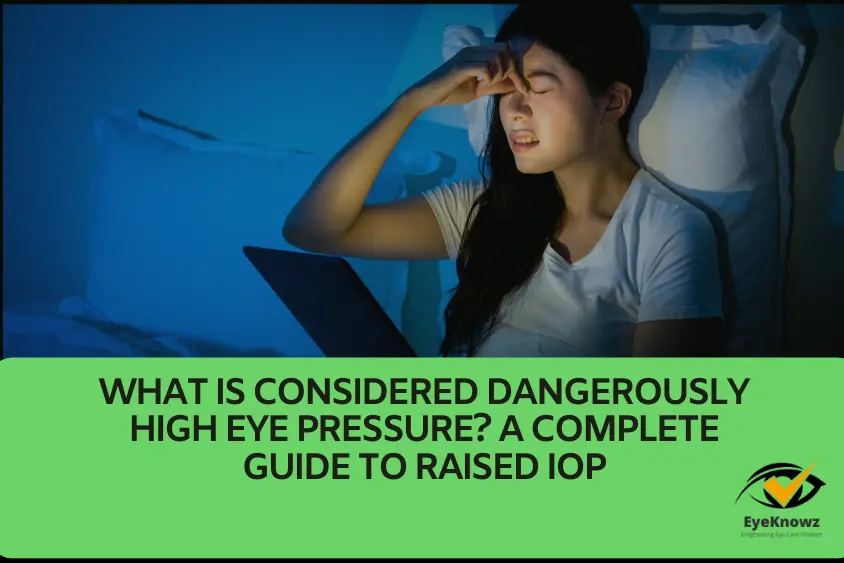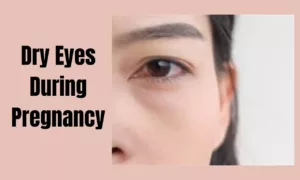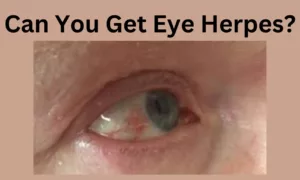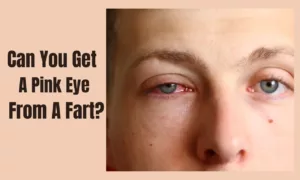It is important to keep a note of your eye health to avoid any eye complications in the future. Like other eye health monitoring exams checking the eye pressure level is also essential. Evaluating eye pressure will help the optometrist to timely figure out any possible vision risks and complications. The most common risk of extremely high eye pressure is glaucoma which plays a significant role in causing blindness.
What is High Eye Pressure?
The maintenance of normal eye pressure levels is important for keeping the eye in normal shape. Aqueous humor is a fluid that is formed and drained constantly at a rate of about 5 ml (equal to 1 teaspoon) daily. This quantity can keep changing throughout the day ultimately causing fluctuation in the pressure levels. The IOP levels are high in some people naturally which is normal in their case. But in other people, it might be an indication of a possible eye complication in the future. This is why you should visit your optometrist regularly to figure out if high-pressure levels are normal or abnormal in your case particularly.
What is considered dangerously high eye pressure? The unit for measuring eye pressure is mm Hg (millimeters of Mercury). This is the same unit that is helpful in the measurement of temperature when using a thermometer. The normal eye pressure level lies between 10 to 21 mm Hg. If the pressure remains high from 21 mm Hg for about 2 weeks to 2 months then it is an indication of ocular hypertension which is also called high eye pressure. In case you notice a high ocular pressure for one appointment it might be a temporary condition and may get back to the normal level itself. For proper diagnosis, it is important that the optometrist measures multiple times to confirm if there is actually any issue with the drainage of aqueous humor. Moreover, evaluation of the structure of the eye is also helpful including the optic nerve for correct diagnosis of the condition. Some eye health complications like angle closure glaucoma are also significantly responsible for causing an increase in the ocular pressure by 30 to 50 mm Hg and causing eye twitching and high blood pressure levels.
What is Intraocular Pressure (IOP)?
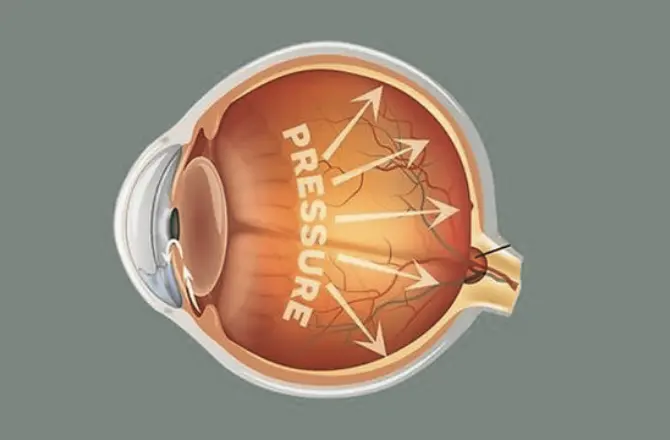
IOP also called intraocular pressure is a medical term that is used to refer to the pressure of fluid present inside your eye. Taking measurements of eye pressure levels is the same as you take readings of your blood pressure. High pressure is an indication of potential health issues and complications. In the case of the eye, different regions get nourishment from the fluid instead of blood which also includes the surface of the eye. This fluid is called the aqueous humor which has a watery consistency and is also helpful in waste removal that builds up in front of the eye. The exact location of the placement of aqueous humor is between the posterior and anterior chambers of the eye. The posterior chamber is located in front of the lens and behind the iris. Whereas the anterior chamber lies between the cornea and the iris. The main source of production of aqueous humor is the ciliary body. From this source, the fluid moves to the front region of the eye via the pupil. The ultimate step is the drainage in which it collects waste via the trabecular meshwork and then gets rid of it.
This meshwork is comprised of multiple small canals between the cornea and the iris. The normal waste removal in a healthy eye is through the canals from the front of the eye. From here the fluid is emptied into the bloodstream. But if there is a blockage or narrowing in these canals the fluid drainage process is affected. In case of improper removal of aqueous humor from the eye, there is a rise in intraocular pressure. The source will keep producing the fluid which will cause a significant increase in the volume of aqueous humor in the eye.
Take the example of filling a bucket with water. If there is an open drain in the bucket the pouring rate of the water will be the same as the water emptying rate. But if you will block the drain partially or completely the water level in the tub will start rising. Eventually, there will be a time when the bucket will become full of water up to the brim and might overflow if more water is added. High fluid volume is also an issue because it puts raised pressure on the tissues present inside the eye. This will ultimately lead to tissue damage which is why optic nerve degeneration is a main problem in the case of glaucoma.
Causes of Ocular Hypertension
What causes high eye pressure and how to reduce it? There are various potential causes of ocular hypertension some of which are discussed here. Age factor is an important cause which becomes a greater risk when you cross 40. Moreover, people with a family history of glaucoma are also more prone to ocular hypertension. Some individuals have naturally thin corneas which is why they have high pressure levels. Regional variation also plays a significant role in the fluctuation of eye pressure levels. Statistically African Americans tend to have a higher risk of ocular hypertension than other people. Moreover using steroids can also sometimes lead to an increase in eye pressure. Steroid eye drops are often prescribed to people after surgery for an improved healing process. There are some other eye complications that can lead to ocular hypertension such as the pseudoexfoliation syndrome. This is a condition associated with genes and age which involves the accumulation of protein fibres. This leads to the blockage of the flow of aqueous humour within the eye. Other conditions like pigment dispersion syndrome are also responsible for the blockage of fluid flow in the eye involving the obstruction of fluid channels.
High Eye Pressure Symptoms
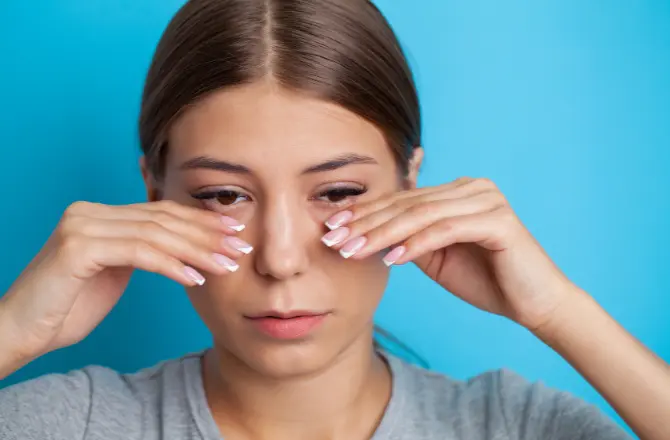
Some most common early-stage high blood pressure eye symptoms include:
- Chest pain
- Breathing difficulty
- Vomiting
- Anxiety
- Buzzing in ears
- Irregular heart rhythm
- Nausea
- Severe headaches
- Vision changes
- Confusion
- Nosebleeds
- Dizziness
Tests for IOP
Tonometry test is helpful in measuring eye pressure levels which can be done in different methods: Electric indentation tonometry, Goldmann (Applanation) tonometry, and Pneumotonometry (Non-contact) tonometry. Some other tests for diagnosing ocular hypertension include pachymetry, visual field test, and gonioscopy.
IOP Treatments
The surgical approaches suitable for high eye pressure treatment involve:
- Trabeculectomy, in which a drainage flap is created for ensuring proper fluid drainage.
- Laser trabeculoplasty, which involves stimulation of trabecular meshwork with the help of a laser beam to enhance fluid drainage.
- Drainage implants involve the insertion of a drainage valve for improving fluid drainage.
Home Remedies and Lifestyle Changes for Treating IOP
- Make sure you discuss the high eye pressure issue with your fitness expert and do exercises that are only suitable for your condition.
- Visiting your optometrist regularly and taking routine eye exams can help with monitoring high pressure issues and avoiding further complications.
- Taking care of your diet is also very important. Add vitamins A, E, and C to your healthy diet along with a balance of copper, zinc, and selenium.
- Consume only a moderate quantity of caffeine as it can lead to eye pressure complications.
Conclusion
This was a detailed guide to high blood pressure in the eyes. Hopefully, now you are well aware of the causes, symptoms, complications, and treatments of this condition. In case your symptoms worsen, rush to your optometrist’s clinic and get medical help as soon as possible. This way you can save yourself from temporary or permanent eye damage and related eye complications.
FAQs
Can high blood pressure cause flashing lights in the eyes?
Yes, high blood pressure can cause flashing lights in the eyes, also called floaters. This creates a disturbance in your field of vision and is an indication that the high blood pressure levels are affecting your eye’s blood vessels.
What does high eye pressure feel like?
High eye pressure feels like sudden, intense, twitching pain in the eyes which leaves the person with a stinging, stabbing, or burning sensation.
What causes high pressure in the eyes in case of children?
Childhood glaucoma is a condition seen in children which involves high pressure in the eyes. This is because of abnormal drainage of aqueous humor in pregnancy or due to damage or trauma to the drain.

